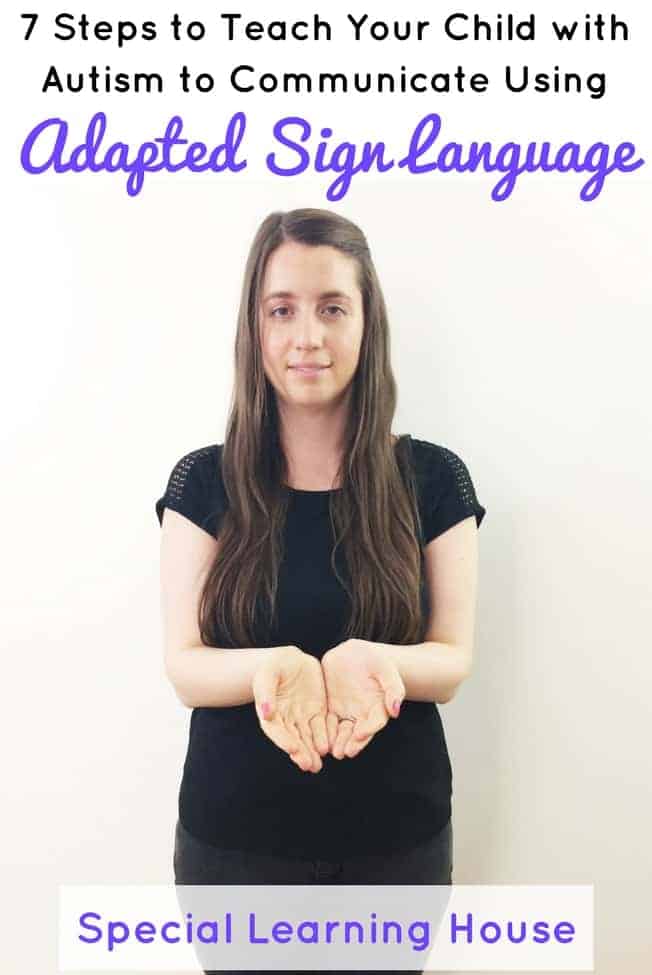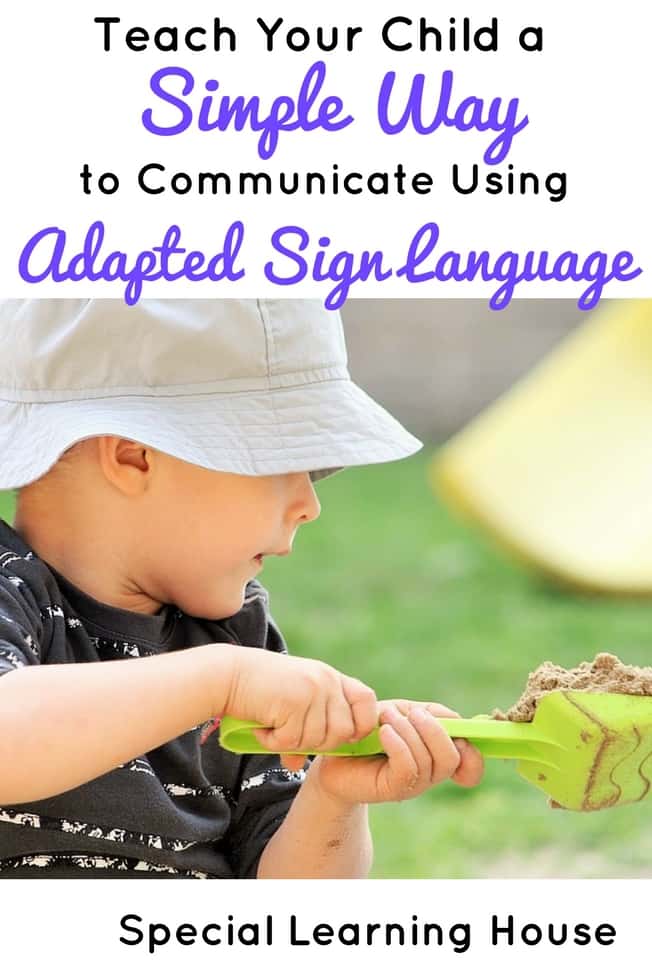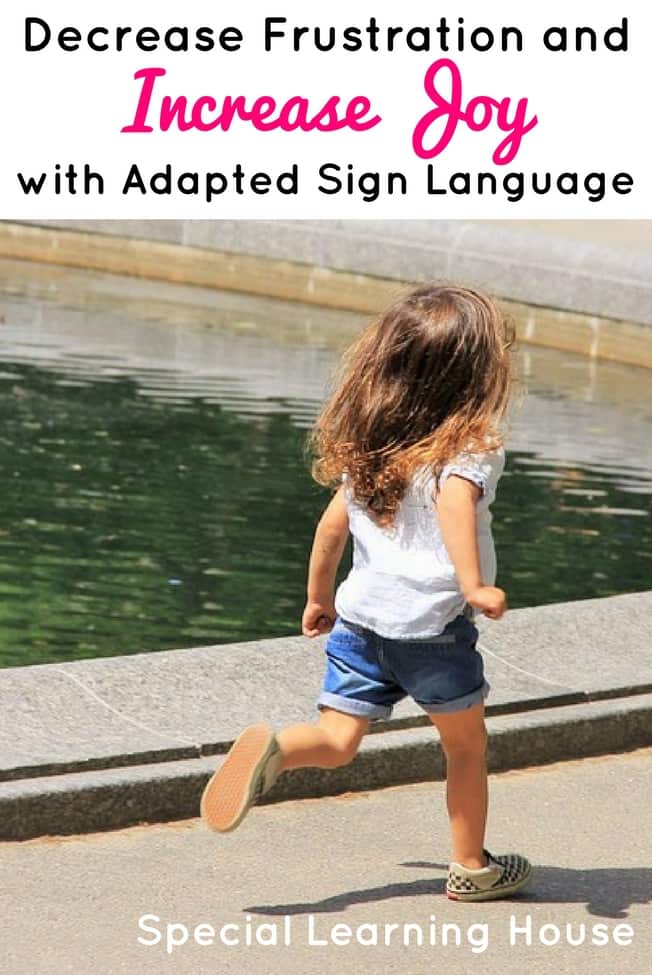This post may contain affiliate links. Please read our disclosure policy.
Thanks to Alix for sharing today’s information. As a play therapist & former teacher myself, I see how important it is to educated families so they can help their children as much as possible. Alex is the owner of the Le Chemin ABA Learning House, a center in the heart of Paris, France, for children with autism and other special needs. Today she is sharing 7 Steps to teach your child with autism to communicate using adapted sign language. Take it away, Alix..
Parents of children with autism are often frustrated by the lack of communication that is a signature trait of an autism diagnosis. Parents crave interaction and communication with their children. These 7 steps will help you teach your child with autism to communicate using adapted sign language and help you increase interaction, communication and fun at home.

Children who are not yet communicating often have high levels of frustration and a long list of challenging behaviors that are the result of not being able to request what they want.
When a new family comes to my center, one of the first things we put in place is an adapted communication system to make sure that the child has a clear way to ask for what he or she wants. Increased communication is directly related to less frustration and more family interaction, happiness and fun.
One of the most effective tools I give parents is the ability to teach their child adapted sign language. You can teach your child with autism to communicate using adapted sign language in 7 easy steps.
How can you get started with adapted language at home with your child right away?
Step 1 : Follow your child’s motivation.
Record what your child wants in a day. In order to understand what your child wants to ask for, pay close attention to his or her motivation. What does he or she love to play with, eat, drink, watch? Write it all down. You will eventually teach your child to ask for each of these things using an adapted sign that is easy and fun.
Step 2 : Teach your child a simple way to ask for what he or she wants.
Start with 3 signs. These will be the first 3 signs you will teach your child to use. Download this free signing poster that I prepared as a gift for you to know exactly which signs you should use to get started right away.

3. Provide the help that your child needs to use the sign.
At first, you may need to physically prompt your child to make the sign. Take your child’s hand and help him or her to make the sign. Give your child the item right away! For example, if you help your child sign “juice”, give your child a drink of juice immediately.
4. If your child makes a mistake, correct him or her.
Make sure not to give your child what he or she wants for an incorrect sign because this will lead to confusion. Instead, try again and give your child any additional help that is needed to make the correct sign.
5. Encourage your child to sign independently.
As soon as possible, reduce your prompt. Our goal is for your little one to make the sign independently.
6. Give lots of praise when your child signs independently.
Sing, dance, clap, praise! Do all of the above. Make it clear that you are so happy that your child is using a sign to ask for what he or she wants. Make sure you provide the item that is being asked for immediately and for a longer amount of time than if you had guided the sign.

7. Practice, practice, practice!
Every single moment of the day provides learning opportunities to teach your child. Whether your child is eating, taking a bath, playing at the park, at school, at the library or in the garden, you can be teaching your child to communicate using adapted sign language. Make sure you seize every possible moment to work on communication with your child in a fun and adapted way.
Will teaching my child to communicate using adapted sign language make it impossible for him or her to speak?
This is one of the most frequent questions I get asked at my center. My answer is a GIANT NO! It does the opposite. Sign language helps your child understand the function of communication; that it is necessary to make a request to receive something rather than just expecting needs to be fulfilled automatically. Using adapted sign language opens up the world of communication for your child and is a stepping stone on the journey towards verbal communication.
Remember to download the free signing poster I prepared for you to start teaching your child adapted sign language right now. Happy signing!














This is great! Signing (using gestures) is communicating with a real language, even if the signs are modified or individualized. And yes, it does lead to less frustration, stronger bond and helps in the ability to learn to speak verbally. Thank you for sharing your knowledge and free handouts.
Thank you so much. My family and I are indeed blessed by this. God bless.